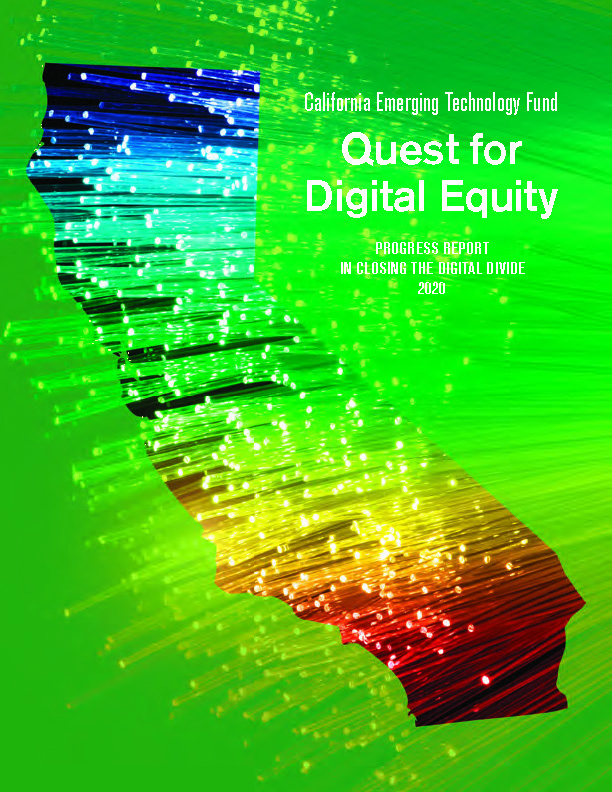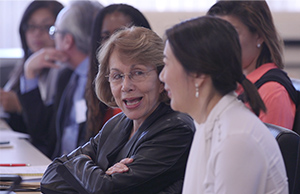Quest for Digital Equity – CETF Progress Report 2020
The Quest for Digital Equity must recognize that the Digital Divide is simply another manifestation of the Economic Divide and that concentrated persistent poverty is rooted in institutionalized racism. Thus, closing the Digital Divide must address the inter-related factors and forces that we call the “wall of poverty” that make it very difficult for low-income residents to escape oppressive economic conditions and succeed in school. This reality screams for systemic change that is within our grasp if policymakers and regulators are willing to overcome bureaucratic inertia and break through government silos.
The COVID-19 pandemic illuminated the Digital Divide and laid bare the widespread inequities that demand immediate action to accelerate the deployment and adoption of broadband throughout the state. Distance learning, telehealth, and working from home require ubiquitous high-speed Internet infrastructure and digitally disadvantaged households need assistance in-language and in-culture to get online. The most effective and efficient way to accomplish these goals is through a sincere public-private partnership in which (a) Internet Service Providers step up to increase advertising about their affordable offers in collaboration with community media, remove barriers for low-income households to sign up, and to partner with community organizations as trusted messengers and (b) all governments and public agencies remove barriers to constructing broadband infrastructure and distribute affordable offers to all low-income households. This is just common sense, but the opportunity still eludes both sides from joining forces in a deep and abiding partnership with a sense of urgency that embraces Digital Equity as a 21st Century Civil Right.
We applaud the Governor’s Broadband For All initiative and are grateful to Legislators for leading to secure essential funding and reforms. The Digital Divide Task Force convened by State Superintendent of Public Instruction Tony Thurmond has the opportunity to transform education. However, technology is only a tool— powerful and empowering—but, must be coupled to the pursuit of academic excellence for all students to truly close the Digital Divide. As Dr. Manuel Pastor says, Digital Inclusion must be “baked in” not “sprinkled on” policy and practice. It must be infused and integrated into everything we do to achieve Digital Equity. Yet, we also must do more—it is time to make “Good Trouble” as we were implored by The Honorable John Lewis.
The companion pandemics of COVID-19 and de facto economic segregation compel us to renew a collective commitment to tackle poverty with a laser focus that realigns public resources and attracts private investment with accountability for results. The sobering realities confront us with these questions: Will protest lead the way to policy? Will the substance of our actions match the power of symbols? Will we finally come together to deliver for everyone on the promise of America and the potential of California? It is only a matter of LEADERSHIP to say YES to a better future for all Californians.
Sunne Wright McPeak
President and CEO
California Emerging Technology Fund


